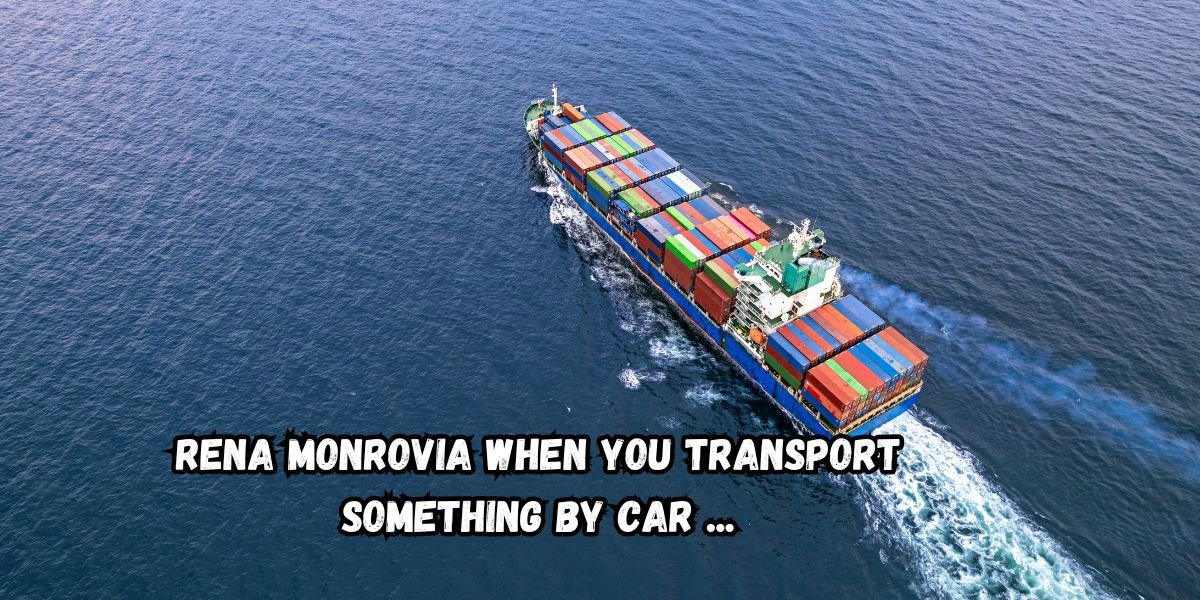Introduction
The MV Rena Monrovia when you transport something by car … was a Panamax-class container ship that embodied the ingenuity of maritime engineering while being a centerpiece of one of the most infamous shipping incidents in modern history. Built in 1990 by Howaldtswerke-Deutsche Werft AG in Germany, the vessel had a remarkable capacity of 3,351 TEU (twenty-foot equivalent units). Over the years, the ship underwent various ownership changes and name alterations, starting as ZIM America and eventually becoming MV Rena under the Greek company Costamare Inc..
This article explores the history of the Rena, the circumstances surrounding its grounding, and practical tips for effective transportation logistics, including considerations for car-based goods transport.
What Is the Rena Incident?
The Rena incident occurred on October 5, 2011, when the MV Rena struck the Astrolabe Reef near Tauranga, New Zealand. The collision resulted in the spillage of oil and cargo, making it one of the worst environmental disasters in New Zealand’s history.
The grounding raised questions about maritime safety, cargo handling, and environmental preparedness. Investigations revealed that poor navigation and crew error contributed to the catastrophe. The cleanup efforts, costing millions of dollars, became a case study in disaster response for marine incidents.
Read Also: Alternativeto.net Netflix A Better Way to Stream Content
About The Rena Monrovia When You Transport Something By Car …
The Rena Monrovia was a Panamax container ship with the following key specifications:
- Length: 236 meters (774 feet)
- Breadth: 32.2 meters (106 feet)
- Gross Tonnage: 38,788
- Net Tonnage: 16,454
- Deadweight Tonnage: 47,231 tonnes
- Crew Capacity: 20
Designed to carry large volumes of cargo across oceans, the Rena represented the pinnacle of efficiency in shipping logistics. It operated in seven holds, maximizing its capacity for global trade.
Why “Rena Monrovia When You Transport Something By Car …”?
Though the Rena’s history is tied to maritime operations, the principles behind its transportation management extend to land-based logistics, particularly car-based transportation. Whether moving goods by ship or car, careful planning, attention to weight distribution, and adherence to regulations are paramount.
By studying the practices and mistakes related to the Rena, one can implement effective strategies to avoid logistical errors in vehicle-based transport.
Read Also: Redefining Modern Architecture with www . kdarchitects .net
What Are the Best Ways to Follow While Rena Monrovia When You Transport Something By Car …?
Transporting goods by car requires a structured approach to ensure safety, efficiency, and compliance. Below are the critical steps:
Vehicle Weight Capacity
Understanding your vehicle’s weight capacity is essential:
- Check the Gross Vehicle Weight Rating (GVWR): This indicates the maximum weight a car can handle, including the vehicle’s own weight, passengers, and cargo.
- Distribute Weight Evenly: Overloading a single axle can destabilize the car and lead to accidents.
Planning
Planning is key to successful transportation:
- Measure the Dimensions of Cargo: Ensure that goods fit securely within the vehicle’s storage space.
- Secure the Load Properly: Use tie-down straps, bungee cords, or cargo nets to prevent movement during transit.
- Choose the Best Route: Identify roads with minimal traffic and suitable infrastructure for your vehicle size and load.
Read Also: How Winnoise Compares to Other Streaming Services
Procedures That Should Be Taken Rena Monrovia When You Transport Something by Car
To ensure smooth transportation, follow these procedures:
- Inspect the Vehicle: Check tires, brakes, and suspension to handle the additional weight safely.
- Prepare for Emergencies: Carry a first-aid kit, tools, and a spare tire.
- Avoid Overpacking: Overloading can reduce fuel efficiency and increase wear and tear.
- Follow Local Laws: Ensure your transportation complies with traffic laws and regulations.
Legal and Practical Considerations
When transporting goods, legal compliance is as crucial as practical execution.
Traffic Laws and Regulations
- Weight Limits: Stay within the legally defined weight limits for your vehicle type.
- Securing Cargo: Many jurisdictions require loads to be properly secured to prevent accidents.
- Insurance Coverage: Verify that your insurance covers goods in transit.
By following these regulations, you can avoid fines and ensure safety on the road.
Read Also: Letflix The Truth About Free Movies, Legitimacy, and Risks
Effective Tips for Vehicle Commuting
Here are some effective tips to optimize vehicle commuting for transporting goods:
- Plan Rest Stops: If the journey is long, ensure you schedule stops to check on the cargo and rest.
- Use GPS and Traffic Updates: Stay informed about road conditions and avoid delays.
- Optimize Fuel Efficiency: Drive at a consistent speed to reduce fuel consumption when carrying heavy loads.
Read Also: Redefining Modern Architecture with www . kdarchitects .net
Conclusion
The MV Rena Monrovia When You Transport Something By Car … is more than a case study in maritime operations; it serves as a valuable lesson in logistics, planning, and risk management. Whether you are transporting goods by sea or land, the principles of weight distribution, route planning, and regulatory compliance remain consistent.


